Abstract
During the course of Plasmodium berghei malaria in the rat, splenic clearance of damaged uninfected erythrocytes (heated or Heinz body-containing) underwent changes strikingly similar to those of infected erythrocytes. Splenic trapping of abnormal erythrocytes was impaired during the period of rising parasitemia but became supernormal just before the onset of resolution of the acute infection. These changes could be related to the development of splenomegaly and alterations in splenic cordal microcirculation during infection. The relative distribution of flow through the cords was decreased during rising parasitemia and was restored before the onset of resolution. Together, our observations support the hypothesis that altered rheologic properties of infected erythrocytes are a major determinant of their removal by the spleen. These data suggest that the alterations in splenic microcirculation that occur during malaria may have important implications for host defense.
Full text
PDF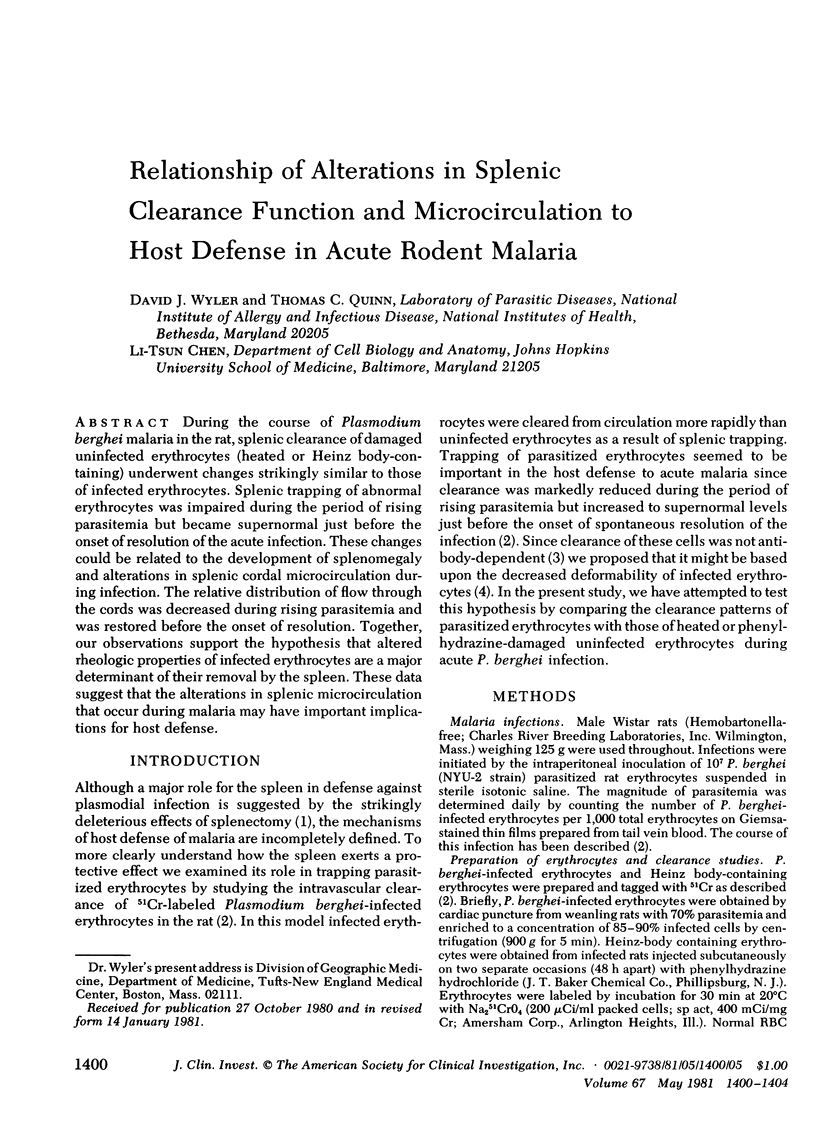
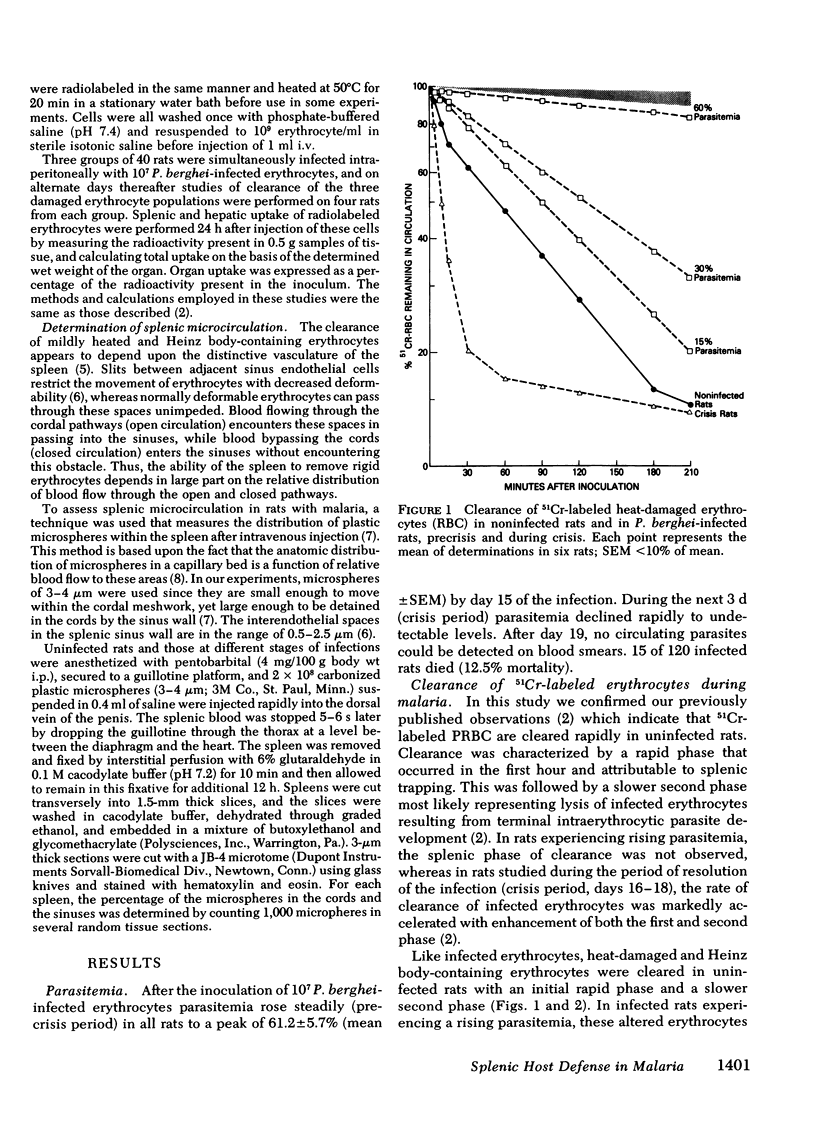
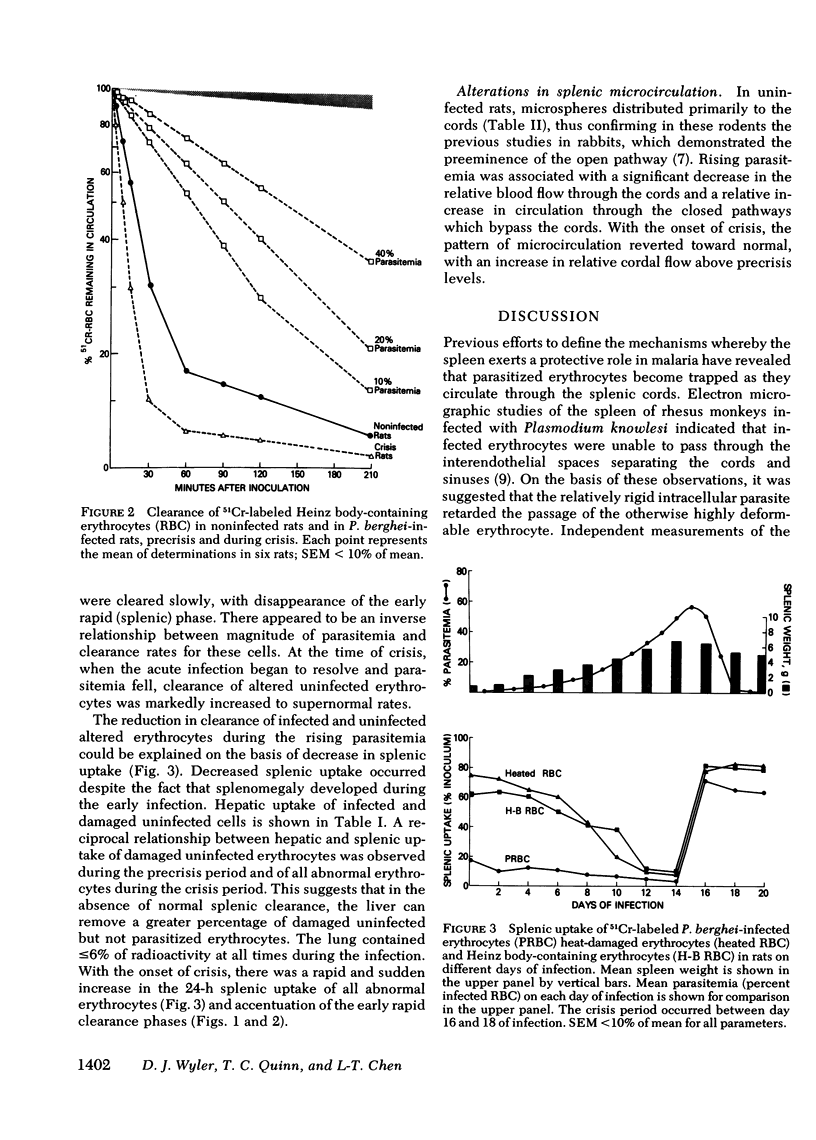
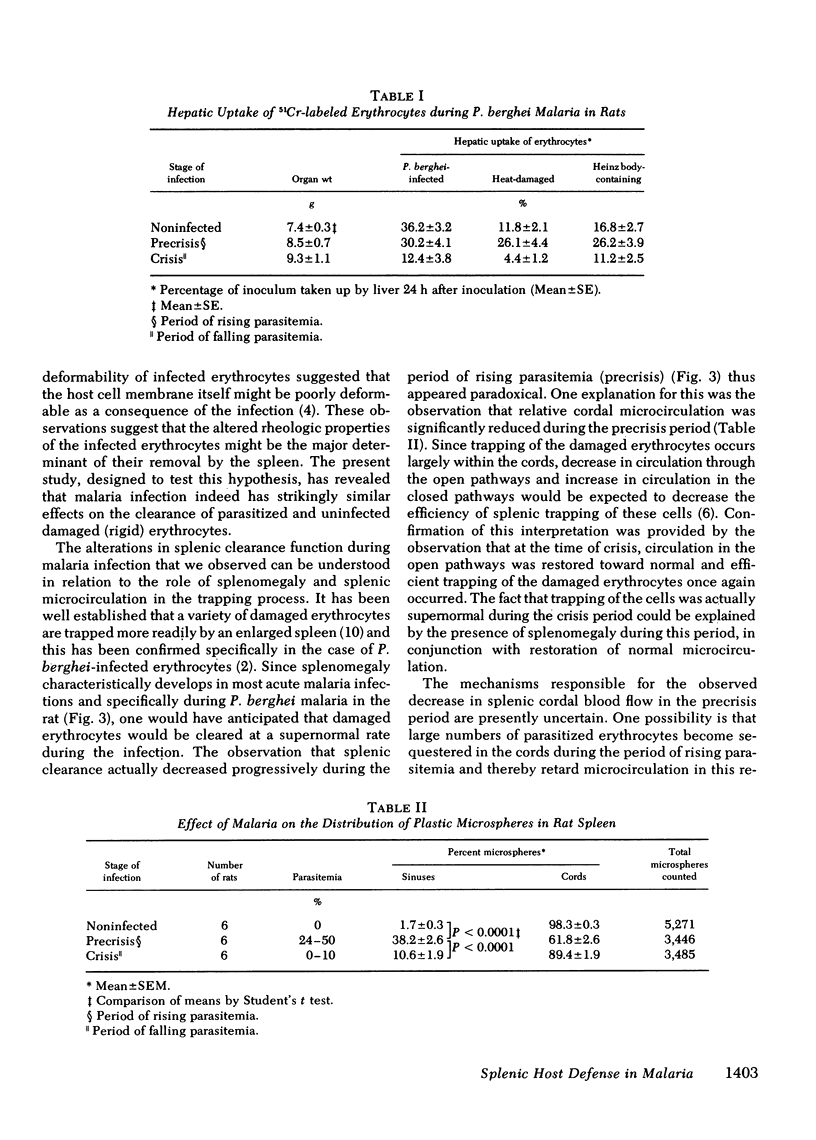
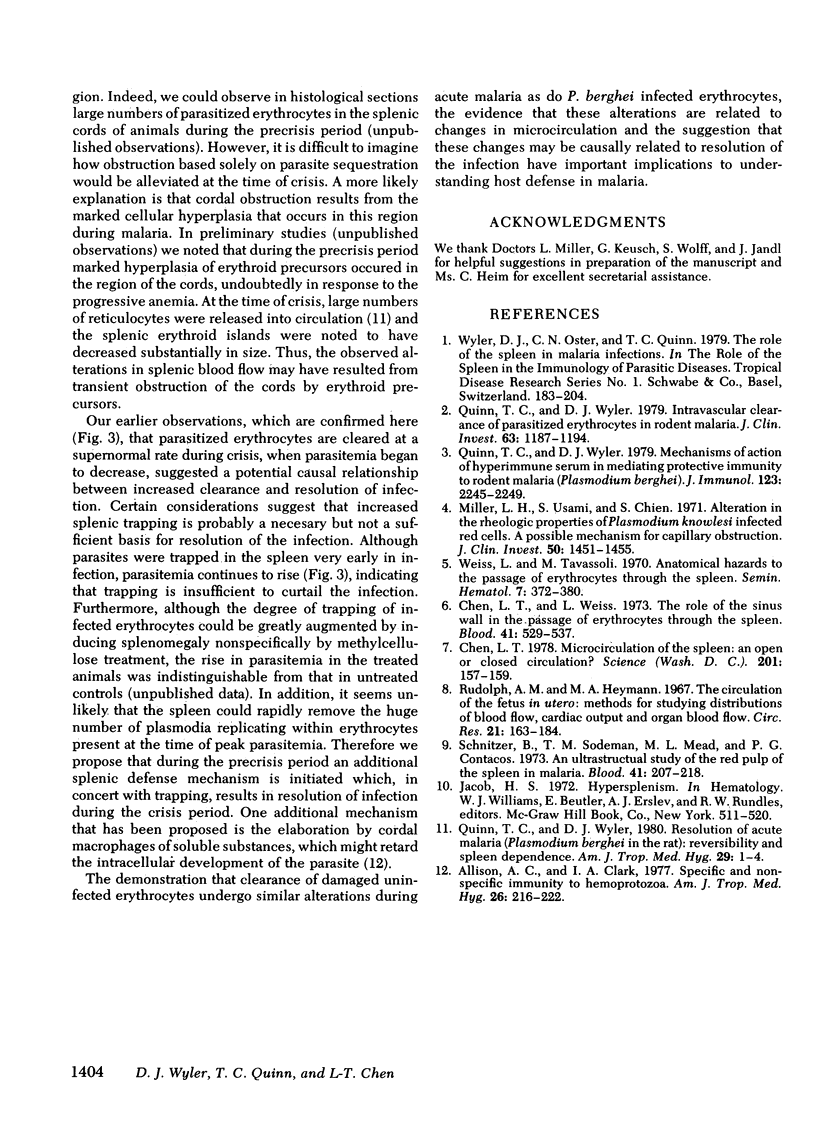
Selected References
These references are in PubMed. This may not be the complete list of references from this article.
- Allison A. C., Clark I. A. Specific and non-specific immunity to haemoprotozoa. Am J Trop Med Hyg. 1977 Nov;26(6 Pt 2):216–222. doi: 10.4269/ajtmh.1977.26.216. [DOI] [PubMed] [Google Scholar]
- Chen L. T., Weiss L. The role of the sinus wall in the passage of erythrocytes through the spleen. Blood. 1973 Apr;41(4):529–537. [PubMed] [Google Scholar]
- Miller L. H., Usami S., Chien S. Alteration in the rheologic properties of Plasmodium knowlesi--infected red cells. A possible mechanism for capillary obstruction. J Clin Invest. 1971 Jul;50(7):1451–1455. doi: 10.1172/JCI106629. [DOI] [PMC free article] [PubMed] [Google Scholar]
- Quinn T. C., Wyler D. J. Intravascular clearance of parasitized erythrocytes in rodent malaria. J Clin Invest. 1979 Jun;63(6):1187–1194. doi: 10.1172/JCI109413. [DOI] [PMC free article] [PubMed] [Google Scholar]
- Quinn T. C., Wyler D. J. Mechanisms of action of hyperimmune serum in mediating protective immunity to rodent malaria (Plasmodium berghei). J Immunol. 1979 Nov;123(5):2245–2249. [PubMed] [Google Scholar]
- Rudolph A. M., Heymann M. A. The circulation of the fetus in utero. Methods for studying distribution of blood flow, cardiac output and organ blood flow. Circ Res. 1967 Aug;21(2):163–184. doi: 10.1161/01.res.21.2.163. [DOI] [PubMed] [Google Scholar]
- Schnitzer B., Sodeman T. M., Mead M. L., Contacos P. G. An ultrastructural study of the red pulp of the spleen in malaria. Blood. 1973 Feb;41(2):207–218. [PubMed] [Google Scholar]
- Weiss L., Tavassoli M. Anatomical hazards to the passage of erythrocytes through the spleen. Semin Hematol. 1970 Oct;7(4):372–380. [PubMed] [Google Scholar]


